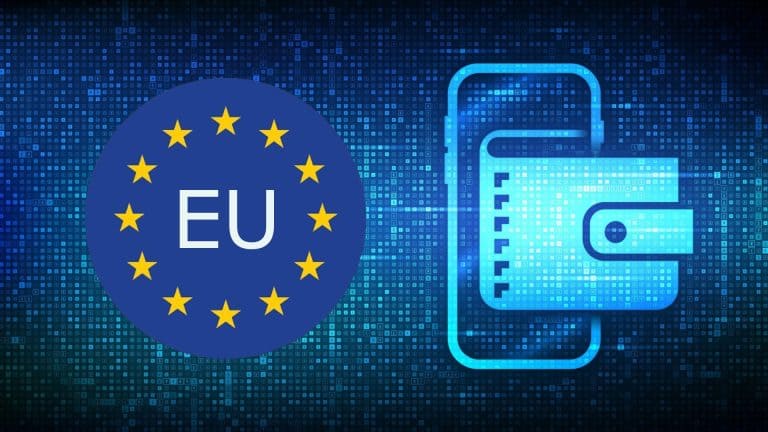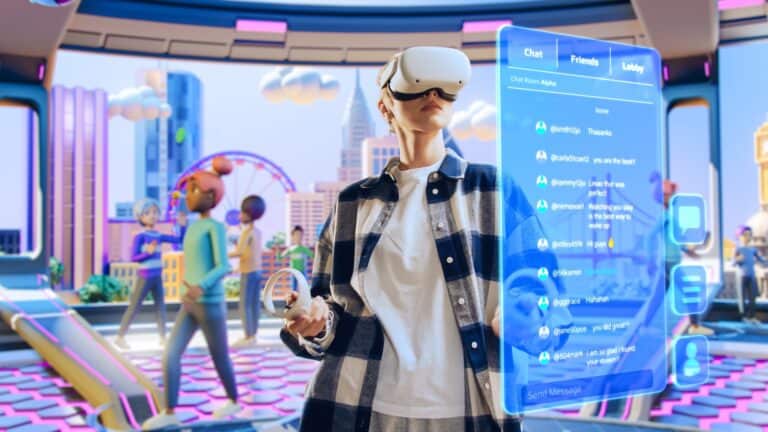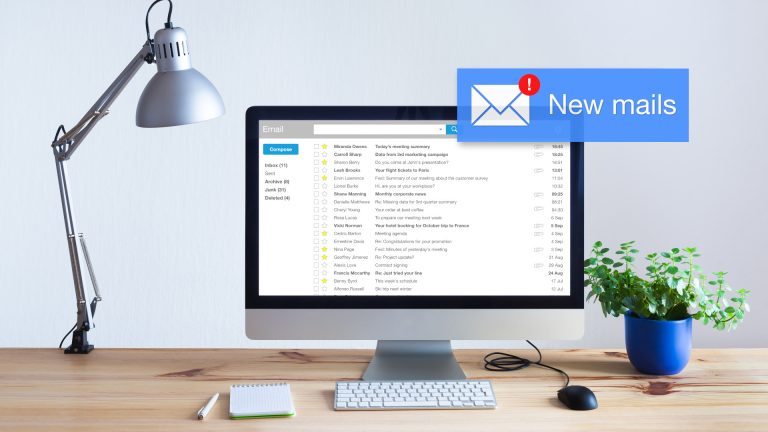
eIDAS 2: Die digitale Wallet für EU-Bürger
Viele Bürgerinnen und Bürger schätzen die Wallet auf ihrem Smartphone, vor allem auf Reisen und beim Bezahlen. Was dürfen sie von der neuen, auf eIDAS-basierenden Wallet für den gesamten EU-Raum erwarten?

Viele Bürgerinnen und Bürger schätzen die Wallet auf ihrem Smartphone, vor allem auf Reisen und beim Bezahlen. Was dürfen sie von der neuen, auf eIDAS-basierenden Wallet für den gesamten EU-Raum erwarten?

Entdecken Sie die innovativen Funktionen der neuen digitalen Identität (eID) in der Schweiz, basierend auf Zero-Knowledge und Blockchain-Technologie.
Die Digitalisierung beeinflusst nahezu jeden Aspekt der Gesellschaft.

Erfahren Sie, wie konvergente Identitätssicherung und Identity & Access Management den Lebenszyklus digitaler Identitäten absichern und schützen. Entdecken Sie die Vorteile der passwortlosen Multi-Faktor-Authentifizierung (MFA) und der kontinuierlichen Risikobewertung.

Wie Führungskräfte eine zukunftssichere Identitätsstrategie - auch für das Metaversum - auf die Beine stellen können.

Neben Themen wie „Self-Sovereign Identity“ (SSI) und der neuen EU-Verordnung eIDAS 2.0 rund um Wallets, Vertrauensdienste und Interoperabilität beschäftigt die Identity Management Experten kaum ein Konzept mehr, als fein-granulare Autorisierung (FGA).

Homeoffice und mobiles Arbeiten führt in vielen Unternehmen zu Problemen mit der Cybersicherheit: Gut jedes vierte Unternehmen in Deutschland stimmt der Aussage zu, dass mobiles Arbeiten erhebliche IT-Sicherheitsprobleme verursacht (26 Prozent).

Die Ransomware-Industrie steht nicht still. Längst handeln die Akteure nicht mehr nur aus Vergnügen oder aus der Lust heraus, Chaos zu stiften. Cyberkriminelle agieren gewinnorientiert, wie man es von Unternehmen kennt, und gehen auf dem Weg der Professionalisierung und Rationalisierung ihrer Angriffsmethoden immer weiter.

In den meisten Unternehmen hat die Digitalisierung in den zurückliegenden Jahren bereits in viele Geschäftsbereiche Einzug gehalten. Doch die Digitalisierungsqualität könnte laut einer aktuellen DIHK-Umfrage besser sein. Demnach haben viele Unternehmen das Gefühl, bei der Digitalisierung auf der Stelle zu treten.

Ein neues Jahr hat begonnen, und die Motivation ist groß, die guten Vorsätze dieses Mal wirklich durchzuziehen – das Rauchen aufgeben, fünf Kilo abnehmen oder aber endlich mal in puncto Cybersicherheit Tabula rasa machen.

SpaceX hat erfolgreich Textnachrichten über Starlink-Satelliten im Netz von T-Mobile an ein Smartphone verschickt. Das Unternehmen von Elon Musk will seinen Direct-to-Device-Mobilfunkdienst im kommenden Jahr auf den Markt bringen.
Onlineportal von IT Management
We firmly believe that the internet should be available and accessible to anyone, and are committed to providing a website that is accessible to the widest possible audience, regardless of circumstance and ability.
To fulfill this, we aim to adhere as strictly as possible to the World Wide Web Consortium’s (W3C) Web Content Accessibility Guidelines 2.1 (WCAG 2.1) at the AA level. These guidelines explain how to make web content accessible to people with a wide array of disabilities. Complying with those guidelines helps us ensure that the website is accessible to all people: blind people, people with motor impairments, visual impairment, cognitive disabilities, and more.
This website utilizes various technologies that are meant to make it as accessible as possible at all times. We utilize an accessibility interface that allows persons with specific disabilities to adjust the website’s UI (user interface) and design it to their personal needs.
Additionally, the website utilizes an AI-based application that runs in the background and optimizes its accessibility level constantly. This application remediates the website’s HTML, adapts Its functionality and behavior for screen-readers used by the blind users, and for keyboard functions used by individuals with motor impairments.
If you’ve found a malfunction or have ideas for improvement, we’ll be happy to hear from you. You can reach out to the website’s operators by using the following email
Our website implements the ARIA attributes (Accessible Rich Internet Applications) technique, alongside various different behavioral changes, to ensure blind users visiting with screen-readers are able to read, comprehend, and enjoy the website’s functions. As soon as a user with a screen-reader enters your site, they immediately receive a prompt to enter the Screen-Reader Profile so they can browse and operate your site effectively. Here’s how our website covers some of the most important screen-reader requirements, alongside console screenshots of code examples:
Screen-reader optimization: we run a background process that learns the website’s components from top to bottom, to ensure ongoing compliance even when updating the website. In this process, we provide screen-readers with meaningful data using the ARIA set of attributes. For example, we provide accurate form labels; descriptions for actionable icons (social media icons, search icons, cart icons, etc.); validation guidance for form inputs; element roles such as buttons, menus, modal dialogues (popups), and others. Additionally, the background process scans all the website’s images and provides an accurate and meaningful image-object-recognition-based description as an ALT (alternate text) tag for images that are not described. It will also extract texts that are embedded within the image, using an OCR (optical character recognition) technology. To turn on screen-reader adjustments at any time, users need only to press the Alt+1 keyboard combination. Screen-reader users also get automatic announcements to turn the Screen-reader mode on as soon as they enter the website.
These adjustments are compatible with all popular screen readers, including JAWS and NVDA.
Keyboard navigation optimization: The background process also adjusts the website’s HTML, and adds various behaviors using JavaScript code to make the website operable by the keyboard. This includes the ability to navigate the website using the Tab and Shift+Tab keys, operate dropdowns with the arrow keys, close them with Esc, trigger buttons and links using the Enter key, navigate between radio and checkbox elements using the arrow keys, and fill them in with the Spacebar or Enter key.Additionally, keyboard users will find quick-navigation and content-skip menus, available at any time by clicking Alt+1, or as the first elements of the site while navigating with the keyboard. The background process also handles triggered popups by moving the keyboard focus towards them as soon as they appear, and not allow the focus drift outside it.
Users can also use shortcuts such as “M” (menus), “H” (headings), “F” (forms), “B” (buttons), and “G” (graphics) to jump to specific elements.
We aim to support the widest array of browsers and assistive technologies as possible, so our users can choose the best fitting tools for them, with as few limitations as possible. Therefore, we have worked very hard to be able to support all major systems that comprise over 95% of the user market share including Google Chrome, Mozilla Firefox, Apple Safari, Opera and Microsoft Edge, JAWS and NVDA (screen readers).
Despite our very best efforts to allow anybody to adjust the website to their needs. There may still be pages or sections that are not fully accessible, are in the process of becoming accessible, or are lacking an adequate technological solution to make them accessible. Still, we are continually improving our accessibility, adding, updating and improving its options and features, and developing and adopting new technologies. All this is meant to reach the optimal level of accessibility, following technological advancements. For any assistance, please reach out to